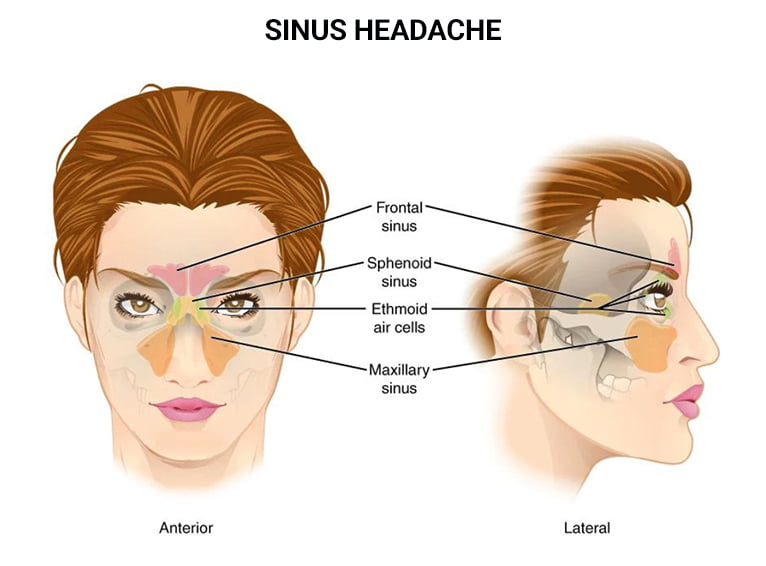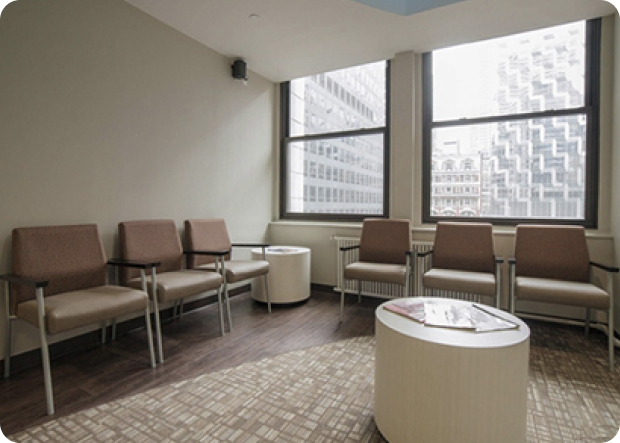Headaches may be a common health concern, but they’re actually pretty complex. They can feel like a sharp pain or a dull ache; they can come out of nowhere or develop slowly; they can even last for a few minutes or sometimes a few months. While most headaches aren’t dangerous, it’s important to be informed of the different types and causes of headaches to pinpoint a serious underlying health condition.
So what are the types of headaches? There are, in fact, more than 150 types of headaches and they fall into 2 categories: primary and secondary headaches. The primary types (most common classification) result from issues involving pain-sensitive structures in the head and neck, while the secondary types are symptoms or signs of an illness.
Two Kinds of Headaches: Primary Versus Secondary
Headaches vary significantly in terms of intensity, location, frequency, and cause. The brain itself does not feel pain because brain tissue doesn’t have pain-sensitive nerve fibers. This feature is the reason why neurosurgeons can perform surgical operations on the brain while the patient is awake and without them feeling any discomfort.
The 2 basic classifications of headaches are primary and secondary – the cause of the headache is what spells the difference. Primary headaches are simply due to the overactivity of pain-sensitive structures in the head; it’s not caused by another underlying health condition. Genetics and lifestyle may even play a role.
Secondary headaches are the result of another disease that triggers the pain-sensitive nerves in the head. These can be telltale signs of a more serious underlying condition. Examples include brain freeze from ice cream, rebound headaches due to medication overuse, and external compression headaches because of heavy weight on the head such as headgear.
Use the acronym SNOOP to find out if you are experiencing a primary or secondary headache:
- S – systemic signs and symptoms (fever, weight loss, medical history)
- N – neurologic exam (abnormal speech, dizziness, confusion)
- O – onset (illnesses causing a sudden onset)
- O – onset of age (may require an MRI)
- P – progressive (exacerbated over time)

Most Common Primary Headaches
A primary headache is when the headache itself is the main issue as it is not a symptom of any other illness. It is caused by the pain-sensitive parts of the body including the nerves, blood vessels, and muscles. A combination of these factors, and sometimes even genetics, can affect the pain in your head. Primary headaches are classified into tension-like, migraine, and cluster.
1) Tension-Type Headache
A tension headache is the most common type of headache disorder and is often described as a rubber band-like tension around the head. It has 2 main types: Episodic tension-type headaches which happen infrequently (less than 15 days a month); while chronic headache happens when your headache days outnumber your headache-free days in a month.
a) Symptoms
Patients experience tension headache symptoms differently. Some describe a tight band of pain as if someone is squeezing both sides of their head, constant and throbbing pain, while others feel a dull ache. Symptoms last from 30 minutes to a week.
b) Treatments
Most tension-type headache disorders can be treated by over-the-counter medications like Aspirin, ibuprofen (Advil), and acetaminophen (Tylenol). Alternative therapies may also help such as massage therapy and acupuncture. Note that while treatments can help you get relief from your symptoms, these are not substitutes for coping with the stress triggers of your life that may be causing your headache.
2) Migraine Headache
A migraine is a headache felt as a severe throbbing and pulsing sensation on either side of the head. It is a common health condition that occurs alongside nausea and increased light and sound sensitivity. The pain can last for hours up to a few days.
Some patients experience an aura, a warning symptom, which entails different kinds of disturbances such as flashes of light, tingling in the body, and difficulty speaking.
a) Symptoms
Migraine headache worsens with physical activity, but should only last up to 72 hours without treatment. The symptoms of migraine include moderate to severe pain, pulsating sensation, diarrhea, stomach pain, loss of appetite, exhaustion, speech changes, and inability to focus or concentrate. Diarrhea and fever are rare symptoms.
b) Treatments
Treatment is aimed at giving you relief and preventing any more migraine attacks. If you know the factors that trigger your migraine, avoid them as much as you can. Some simple steps to head off the pain would be, jotting down in a migraine diary to determine your triggers. Two, using over-the-counter or prescription medications. And lastly, use hot or cold compresses on your head and neck.
3) Cluster Headache
Another primary headache disorder is called a cluster headache, which happens in cluster periods or cyclical patterns. This is one of the most excruciating and debilitating types of headache. It causes you to wake up in the middle of the night feeling severe pain on the side of your head. Attacks can last from weeks to months and are followed by periods of remission. Fortunately, this is a rare condition that isn’t life-threatening.
a) Symptoms
A cluster headache usually strikes without warning. Common symptoms are the following: one-sided pain, restlessness, as well as redness, swelling, drooping eyelid, and sweating on the affected side. Cluster periods can occur seasonally, perhaps every summer or fall, although most people have episodic clusters. The pain should last as soon as it starts, with rapidly decreasing intensity.
b) Treatments
Since cluster headaches come out of nowhere, these can be difficult to evaluate and treat, and you would need fast-acting medications. Doctors usually perform a neurological examination to assess if your brain is functioning normally. They will also recommend some imaging tests, such as an MRI and CT scan, to rule out other possible triggers like a tumor or an aneurysm.
Most Common Types of Secondary Headaches
The key to differentiating secondary headache disorders from primary types lies in the features, symptoms, and doctor’s physical examination. Your doctor typically looks for signs that point to a secondary headache.
| Description | Symptoms | Treatment | |
| Allergy/Sinus Headache | Due to the swelling and inflammation of the sinus passages, allergic rhinitis, and hay fever can trigger a headache. Sinus headaches are fairly rare and can be felt at the top of the skull or behind the cheeks. | Symptoms that occur at the same time as this type of headache include a stuffy nose, a toothache, mucus coming from the nose, watery eyes, and tenderness. | Over-the-counter allergy medications can be taken every day, for as long as your body is exposed to the allergens. |
| Caffeine Headaches | Caffeine can actually treat and trigger a headache. When consumed regularly, the body may become dependent on its effects and result in a caffeine withdrawal headache. | Personal experience is your best bet at determining if you have a caffeine-induced headache. If you have a cup of coffee every morning and get a headache on the day you skip it, there’s your warning sign. | Instead of going cold turkey, we recommend tapering off caffeine consumption slowly. Since caffeine leaves you dehydrated, don’t forget to drink lots of water. |
| Hormone Headaches | Periods aren’t the only trigger of hormone migraines in women. Other causes include the combined pill, menopause, pregnancy, and hormone replacement therapies. | Try keeping a diary for at least 3 menstrual cycles to see if your headaches are linked to your period. Check if you are experiencing throbbing pain, acne, cravings, fatigue, joint pain, loss of appetite, etc. | Your doctor may prescribe medicines like triptans and mefenamic acid. These do not contain hormones, but they are used to prevent headaches from worsening. |
| Hypertension Headaches | Hypertension causes a headache when blood pressure levels reach and go beyond 180/120 mm Hg. This is also considered a hypertensive crisis, a medical emergency that means you should contact your healthcare provider immediately. | This type of headache has classic symptoms of tension type headaches and often occurs in the morning. Other potential symptoms include pulsating and throbbing pain, nausea, and visual disturbances. | To manage high blood pressure, you can take over-the-counter medications (OTC pain relievers and beta-blocker drugs) or commit to lifestyle changes that reduce stress and hypertension. |
| Rebound Headaches | Rebound headache disorders are also known as overuse headaches. These happen to patients that take certain medications too often. | Symptoms differ between patients but can include incapacitating pain, insomnia, psychological distress, and memory issues. | To prevent this type of headache, you should take preventative measures rather than overmedicating and overdosing yourself with pain-relieving pills. You will most likely need to withdraw from the medication causing the headache. |
Managing headaches is more than just finding the right medication. You need a proper diagnosis and personalized treatment plan. Advanced Headache Center treats all types of headaches including migraines, hypertension, and cluster headaches. We also offer recommendations like multiple modalities, occipital nerve blocks, physical therapy, and acupuncture.
When to See a Doctor
Almost everyone experiences headaches, and most of the time, there’s nothing to worry about. But if your headaches are interrupting your daily life, it’s time to see a doctor so that they can rule out other neurological disorders, find the right course of action, and manage all the symptoms. You never know if the headache pain is a result of an underlying illness.
Seek emergency care from a healthcare provider if you have any of these warning signs and symptoms:
- A sudden and severe headache (like a thunderclap)
- A headache after a head injury or fall (even if minor)
- Fever, confusion, seizure, vision problems, weakness, or difficulting speaking
- A headache that worsens over time despite treatment
Address the Source of Your Headache Pain with Advanced Headache Center
Headaches are no fun to deal with. With over 150 types of headaches, it can be difficult to identify the root cause and figure out the best treatment. Advanced Headache Center can help. With our leading headache specialists and state-of-the-art integrative procedures, we’re dedicated to helping you get relief from primary and secondary headaches. Schedule an appointment with us today.




